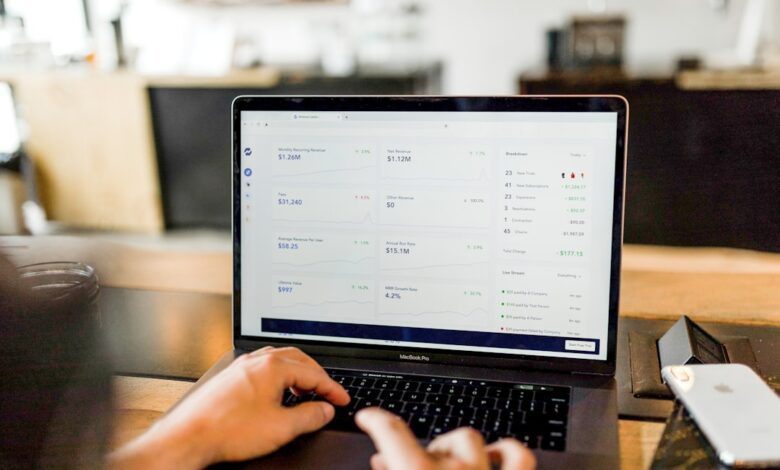Metals in Motion: Analyzing Industrial Demand, Investment Strategies, and Economic Indicators

In an increasingly interconnected global economy, the dynamics of metal markets play a pivotal role in shaping both industrial growth and investment strategies. Silver, copper, and rare earth metals are not only essential components in a myriad of technological applications but also serve as barometers for economic health and investment potential. This article delves into the multifaceted roles these metals play, examining silver's unique position as both an industrial commodity and a safe-haven asset. We will explore how fluctuations in copper prices reflect broader economic trends, the surging demand for rare earth metals driven by green energy technologies, and the ongoing debate between platinum and palladium as investment vehicles. Additionally, we will discuss the importance of metals in diversifying investment portfolios, the influence of inflation on precious and industrial metal prices, the future of aluminum in a sustainable economy, and how mining regulations can impact market stability. Join us as we navigate the complex landscape of metal markets and their implications for investors and industries alike.
- 1. **Silver’s Dual Role: Industrial Applications and Investment Strategies**
- 2. **Copper Prices as Economic Indicators: Understanding Market Dynamics**
- 3. **Navigating the Future: Green Energy and the Demand for Rare Earth Metals**
1. **Silver’s Dual Role: Industrial Applications and Investment Strategies**
Silver’s dual role encompasses its significant industrial applications and its appeal as an investment asset. In the industrial sector, silver is prized for its exceptional conductivity, thermal resistance, and antibacterial properties, making it invaluable in electronics, photovoltaics, and medical devices. As various industries increasingly adopt silver in advanced technologies, such as electric vehicles and renewable energy solutions, demand is projected to rise. This industrial demand often influences silver prices, reflecting broader trends in technological innovation and economic growth.
On the investment side, silver is considered a safe-haven asset, similar to gold, particularly during times of economic uncertainty or inflation. Investors often turn to silver as a hedge against currency devaluation and geopolitical tensions. The metal's liquidity and historical value retention make it an attractive option for diversifying investment portfolios. Additionally, silver's price tends to move inversely to the U.S. dollar, providing further appeal as a strategic investment.
The interplay between silver’s industrial demand and its investment appeal creates a complex market dynamic. While industrial demand can drive prices higher during periods of economic expansion, investment demand can bolster prices during downturns, leading to potential volatility. Understanding this dual role is crucial for both investors and industry stakeholders as they navigate the evolving landscape of the metals market.
2. **Copper Prices as Economic Indicators: Understanding Market Dynamics**
Copper prices serve as a key barometer for global economic health due to copper's extensive use in various industries, including construction, electronics, and transportation. Often referred to as “Dr. Copper,” this metal is sensitive to changes in demand and supply dynamics, reflecting broader economic trends. When economies are thriving, the demand for copper tends to rise, leading to higher prices. This increase is often driven by infrastructure projects, manufacturing growth, and rising consumption in emerging markets.
Conversely, during economic downturns, copper prices typically decline, signaling reduced industrial activity and lower demand. For instance, significant drops in copper prices can indicate slowing growth in major economies like China, which is the largest consumer of copper globally. Analysts closely monitor these price movements as they can provide early signals of economic shifts.
Furthermore, copper prices are influenced by various factors, including geopolitical tensions, trade policies, and currency fluctuations. Supply chain disruptions, such as those caused by labor strikes or natural disasters, can also lead to price volatility. Investors often look to copper futures and exchange-traded funds (ETFs) as a way to hedge against economic uncertainty or to capitalize on anticipated price movements.
In summary, copper prices are not only a reflection of current market conditions but also a predictive tool for understanding future economic trends. As such, they play a crucial role in both investment strategies and industrial planning.
3. **Navigating the Future: Green Energy and the Demand for Rare Earth Metals**
The transition to green energy technologies is reshaping the global landscape of metal demand, particularly for rare earth metals. These metals, which include neodymium, dysprosium, and lithium, play a crucial role in the production of advanced batteries, electric vehicles (EVs), and renewable energy systems such as wind turbines and solar panels.
As countries commit to reducing carbon emissions and increasing the share of renewable energy in their power generation, the demand for rare earth metals is expected to surge. For instance, electric vehicles require significant amounts of neodymium for their powerful magnets, while lithium is essential for rechargeable batteries. The shift towards these technologies is not only a response to climate change but also a move to enhance energy security and reduce reliance on fossil fuels.
However, the supply chain for rare earth metals poses challenges. Much of the global supply is concentrated in a few countries, particularly China, which has historically dominated mining and processing. This concentration can lead to supply vulnerabilities, particularly in the face of geopolitical tensions or trade restrictions. As a result, countries are increasingly looking to diversify their sources of rare earth metals and invest in domestic mining and processing capabilities.
Furthermore, the environmental impact of rare earth metal extraction cannot be overlooked. Mining operations often lead to significant ecological disruption, raising concerns about sustainability. As a result, there is a growing push for more responsible sourcing practices and recycling of rare earth materials from electronic waste.
In summary, the future demand for rare earth metals is closely tied to the expansion of green energy technologies. While this demand presents opportunities for investment and economic growth, it also necessitates careful consideration of supply chain dynamics, environmental impacts, and the need for sustainable practices in the mining sector. As the world navigates this transition, the strategic management of rare earth metal resources will be critical in supporting a sustainable energy future.
In conclusion, the multifaceted roles of metals in both industrial and investment markets underscore their significance in today’s economy. Silver, with its unique duality as both an industrial asset and a cherished investment, illustrates the complex interplay between market demand and financial strategy. Similarly, copper prices serve as a vital barometer for global economic health, reflecting trends that can influence investment decisions across various sectors. The growing emphasis on green energy technologies further amplifies the demand for rare earth metals, signaling a transformative shift in resource utilization that could reshape the landscape of energy production and consumption.
As investors weigh the merits of platinum versus palladium, the decision becomes intricately tied to market perceptions, technological advancements, and the evolving demands of a sustainable future. Moreover, the role of metals in diversifying investment portfolios remains a critical consideration, especially in an era marked by inflationary pressures that significantly impact the prices of both precious and industrial metals.
Looking ahead, aluminum's potential in a sustainable economy emphasizes the importance of innovation and regulatory frameworks in the mining sector. Stricter mining regulations, while essential for environmental protection, also play a crucial role in determining metal prices and market dynamics. As we navigate these complexities, understanding the interconnectedness of these factors will be vital for investors and policymakers alike, ensuring they are well-equipped to make informed decisions in an ever-evolving market landscape.





